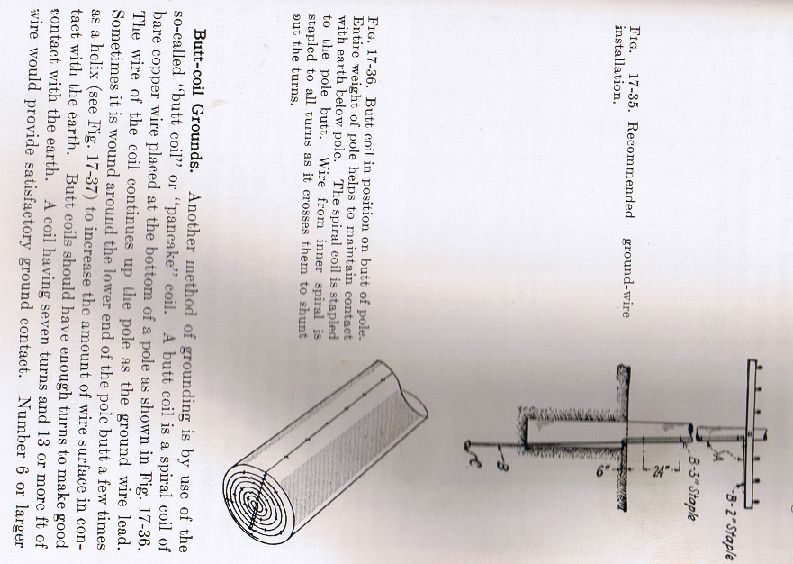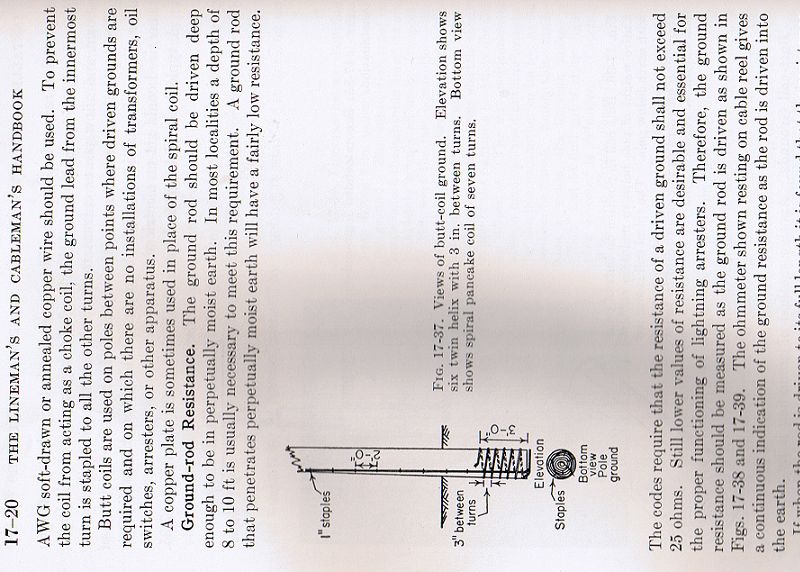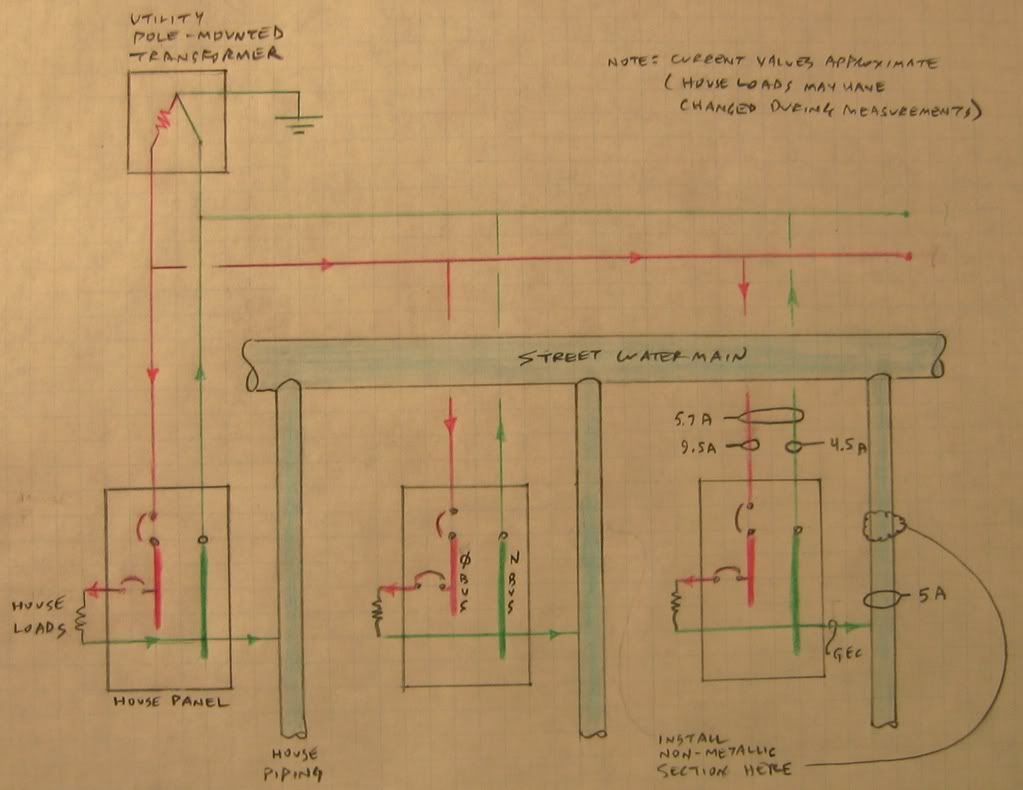I am trying to help someone find out why the have significant 'net current' on the main service conductors feeding their home, and find a way to fix the problem.
The home is fed with (2) phase conductors and (1) neutral conductor (120/240V, 1ph/3w).
In the Main Panel, there are (2) bare conductors terminated at the neutral bus, with one of these conductors going through the garage slab (presumably to a ground rod) and the 2nd going to his basement cold water pipe. Near as I can tell, this ties in with grounding per NEC 250-50.
I measured the 'net current' on the main panel conductors (both incoming main phase conductors and the main neutral conductor in the current probe) and it was 5.7A (the phases individually were 6.2A and 14.1A, and the neutral by itself was 4.5A). With just the (2) panel main phase conductors in the current probe, the measurement was 9.5A - technically this is the current I should see on the main neutral conductor, but again, the incoming neutral conductor current was only 4.5A.
In the basement, I clamped on the cold water pipe between the ground conductor connection point and where the pipe exited the slab and measured approx 6.8A. I'm thinking this reflects the approx 5A 'missing' from the main neutral conductor (the house loads might have changed somewhat between readings).
We opened all of the panel branch circuit breakers, and we were left with about 1A of net current on the panel main conductors (I did not measure the cold water pipe again). I realize this could be ground current coming from other homes with their own grounding issues, but that is not the focus of this question.
We put the breakers back on one at a time to see how each contributed to the 'net current' problem, and almost without exception, each one contributed something to the net current. I find it hard to accept that every circuit in the house had an improperly grounded neutral or other grounding problem so for the moment am concentrating on grounding sources external to the house.
My question is, does anyone have ideas of how pole-mounted utility transformers serving residential areas are grounded? Is it possible that they are grounded directly to the street water main? The reason I ask is that it seems like the panel neutral current is dividing fairly evenly between the panel neutral conductor which is the preferred path back to the utility transformer, and the cold water pipe which is not a desirable path at all! I'm guessing that they are dividing evenly because the cold water pipe path may be of low resistance (just like the panel neutral conductor path) because it connects with the street main and the street main might be intentionally connected to the utility transformer to provide grounding for the transformer.
Someone suggested that the home owner should install a 'plastic' (non-metallic) section of pipe in the cold water piping between his home and the street main (as long as it is 10 feet or more from the house) thereby removing the 2nd low resistance path, with all of the neutral current now returning to the utility transformer via the panel main neutral conductor as it is supposed to.
Does anyone have opinions/advice about this possible solution?
I wish I could include a sketch with this post to make it easier to understand the electrical layout...
The home is fed with (2) phase conductors and (1) neutral conductor (120/240V, 1ph/3w).
In the Main Panel, there are (2) bare conductors terminated at the neutral bus, with one of these conductors going through the garage slab (presumably to a ground rod) and the 2nd going to his basement cold water pipe. Near as I can tell, this ties in with grounding per NEC 250-50.
I measured the 'net current' on the main panel conductors (both incoming main phase conductors and the main neutral conductor in the current probe) and it was 5.7A (the phases individually were 6.2A and 14.1A, and the neutral by itself was 4.5A). With just the (2) panel main phase conductors in the current probe, the measurement was 9.5A - technically this is the current I should see on the main neutral conductor, but again, the incoming neutral conductor current was only 4.5A.
In the basement, I clamped on the cold water pipe between the ground conductor connection point and where the pipe exited the slab and measured approx 6.8A. I'm thinking this reflects the approx 5A 'missing' from the main neutral conductor (the house loads might have changed somewhat between readings).
We opened all of the panel branch circuit breakers, and we were left with about 1A of net current on the panel main conductors (I did not measure the cold water pipe again). I realize this could be ground current coming from other homes with their own grounding issues, but that is not the focus of this question.
We put the breakers back on one at a time to see how each contributed to the 'net current' problem, and almost without exception, each one contributed something to the net current. I find it hard to accept that every circuit in the house had an improperly grounded neutral or other grounding problem so for the moment am concentrating on grounding sources external to the house.
My question is, does anyone have ideas of how pole-mounted utility transformers serving residential areas are grounded? Is it possible that they are grounded directly to the street water main? The reason I ask is that it seems like the panel neutral current is dividing fairly evenly between the panel neutral conductor which is the preferred path back to the utility transformer, and the cold water pipe which is not a desirable path at all! I'm guessing that they are dividing evenly because the cold water pipe path may be of low resistance (just like the panel neutral conductor path) because it connects with the street main and the street main might be intentionally connected to the utility transformer to provide grounding for the transformer.
Someone suggested that the home owner should install a 'plastic' (non-metallic) section of pipe in the cold water piping between his home and the street main (as long as it is 10 feet or more from the house) thereby removing the 2nd low resistance path, with all of the neutral current now returning to the utility transformer via the panel main neutral conductor as it is supposed to.
Does anyone have opinions/advice about this possible solution?
I wish I could include a sketch with this post to make it easier to understand the electrical layout...




